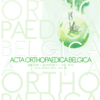Genu valgum deformity – correction by a wedgeless implantless femoral “V” osteotomy
genu valgum ; osteotomy ; deformity ; paediatric ; knee
Published online: Sep 14 2021
Abstract
Coronal malalignment of the knee joint is very common in developing countries especially because of nutritional rickets. Significant valgus deformity needs to be treated surgically to improve appearance, gait and function of the patient. The purpose of this prospective study was to evaluate the results of supracondylar “V” osteotomy as a surgical technique for correction of the valgus knee deformity.
This study was conducted in a tertiary level teaching hospital and 30 cases were included in the study. For all the patients deformity was assessed using ana- tomical tibiofemoral angle, mechanical axis deviation and intermalleolar distance preoperatively and post- operatively.
The average age of our patients was 13.7 years and the average follow up was3.29 years (1.39-14.22 yrs). Clinically the average value of intermalleolar distance preoperatively was 16cm and 3.2 cm postperatively. Average pre-operative tibiofemoral angle was 23° and the average postoperative angle was 6 0 which was found to be statistically significant using the Paired t test (p<0.005). The average value of preoperative mechanical axis deviation was 3.1 cm which decreased to an average value of 1.1 cm postoperatively.
The results with this technique have been encouraging. The advantages of this technique are low morbidity, good stability allowing early ambulation, ability to adjust alignment postoperatively by casting and no need for internal fixation. Few studies have been conducted on osteotomies that do not require internal fixation and are inherently stable. This technique has the advantage of practically no occurrence of any infection or a second surgery to remove hardware in children and adolescents. Since no specialized instrumentation, image intensifier and implants are required, it is cost effective and can be used in any primary care or district level surgical setup in a developing country like ours.
